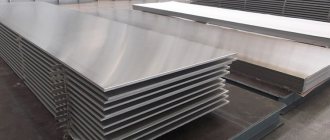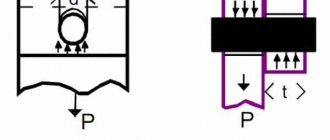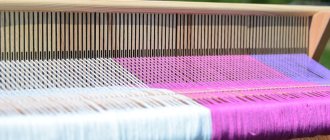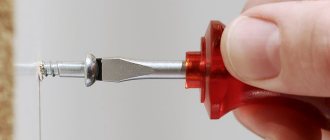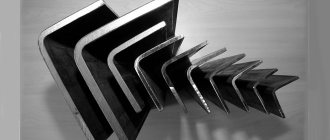Types of fluoroplastic
Several main brands of fluoropolymers are used, differing in the chemical structure of the polymer macromolecules and properties.
Below are the most popular types of fluoroplastic and their main features. Fluoroplastic-2 (PVDF, chemical name - polyvinylene fluoride). It has good strength, elasticity and high chemical resistance. A crystallizing material with a melting point from 135 to 180 degrees C and a glass transition temperature from minus 42 to minus 25 degrees C.
Fluoroplastic-3 (chemical name - polytrifluorochloroethylene). It has good strength and hardness, has the basic characteristics of a thermoplastic - it quite easily transforms into a highly elastic state, melts and is molded when heated. At the same time, it has good resistance to low temperatures.
Fluoroplastic-4 (chemical name - polytetrafluoroethylene). The most famous of fluoroplastics. It has the highest density among the group of fluoropolymers under consideration. F-4 is resistant to high temperatures up to 260 degrees C. Also fluoropaste-4 and its modifications F-4PN, F-4O, F-4D, etc. have excellent hydrophobicity and low porosity.
Fluoroplastic-30 (ECTFE, PE-CTFE, E-CTFE, E/CTFE, copolymer of trifluoroethylene and ethylene). A crystallizing material with a melting point of about 240 degrees C. Its characteristics resemble F-3.
Fluoroplastic-40 (ETFE, E/TFE, copolymer of tetrafluoroethylene and ethylene). According to its data, it is similar to fluoroplastic-4. The material is resistant to chemicals, including strong ones, resistant to ultraviolet radiation, and non-flammable.
Electrical engineering, electronics, instrumentation
In this area, the dielectric properties of fluoroplastic and its ability to maintain operational properties at both very high and critically low temperatures are useful. Directions for use:
- Wires and cables are insulated with Teflon film. It is used to make the primary winding of high-voltage wires, insulation of heating cables (in electric underfloor heating systems and other heating equipment), as well as wires resistant to high temperatures and aggressive environments (grades MS, MGTF).
- To insulate connectors, fluoroplastic tubes, regular or heat-shrinkable, are used.
- Fluoroplastic insulation is also used in the production of capacitors, coils, printed circuit boards, electrical machines, and microwave equipment.
- A separate area is the creation of non-stick and anti-adhesive coatings on the working surfaces of electrical appliances and tools (irons, hairdressing tongs, razor blades, soldering iron attachments and plastic welding machines, etc.).
In this case, one should take into account not only the advantages, but also the disadvantages of fluoroplastic. For example, wires in a Teflon sheath are protected from high temperatures - they cannot be accidentally melted with a soldering iron. But the cold fluidity of the polymer makes the wiring vulnerable to long-term mechanical stress - the sheath will quickly “wipe” and expose the wire if the leg of a sofa or table is placed on it.
Progress and industry
Plexiglas: types, application, properties and characteristics
Currently, the density, weight of fluoroplastic, its resistance to aggressive factors, and safety for humans have made this material absolutely indispensable for industry and everyday life. The average person rarely thinks about what most of the equipment around him is made of, but Teflon was the raw material. Thus, in electronics, the density of fluoroplastic has made it the optimal material for constructing high-quality equipment. In addition, this material has the ability to block current, which makes its field of application even wider. Teflon can be used in wiring work, in the design of capacitors and other parts of electronic systems, including those of very high complexity, as well as those that require increased durability and reliability.
If you pay attention to modern medical devices, you will notice that fluoroplastic is used very actively here too. In particular, it serves as a material for the production of implants and is widely used by dentists
PTFE is also indispensable for ophthalmologists. It is this substance that is used in the manufacturing of pacemakers and blood vessels for implantation into the human body. Fluoroplastic is completely safe for humans, which makes the possibilities for its use so wide.
Disadvantages and possibility of changing properties
Despite the possibility of almost endless use of fluoroplastic, it nevertheless has weaknesses. Thus, adhesive passivity does not allow gluing parts made of this material. This drawback can be eliminated by producing fluoroplastic with a surface treated with oxidizing solutions. The mechanical increase in strength by glass fiber reinforcement is associated with the creep of the material under very high loads.
And of course, taking into account all the positive characteristics, it is necessary to assume the use of expensive equipment: presses, furnaces, processing machines. All this increases the cost of the blanks when compared with simpler polymers.
In order to increase thermal conductivity, hardness, abrasion resistance, and reduce the coefficient of thermal expansion, when necessary for certain tasks, fluoroplastic is enhanced by adding the necessary additives and fillers.
Numerous advantages over other materials make fluoroplastic an indispensable polymer in various fields of activity. The number of manufactured parts and independent products cannot be counted in mechanical engineering - from heavy machinery to household devices, medicine and the food industry.
It is safe to say that further prospects for the use of fluoroplastic will only grow with the exploration of other possibilities for improving the existing properties of the material and endowing it with new qualities.
Comparison of fluoroplastic and caprolon
Polyurethane: characteristics, application and prices
Caprolon, or polyamide-6, is similar in characteristics to fluoroplastic. The difference between caprolon and fluoroplastic is in the mechanical properties, but it is impossible to definitively answer which is stronger - fluoroplastic or caprolon. The latter is a little harder, less deformed and damaged under equal loads. But at the same time, its wear resistance during long-term use is lower than that of fluoroplastic.
The production of parts from caprolon requires higher precision, but technologically it is easier and cheaper to make a part from it by casting than by pressing and baking from fluoroplastic.
The melting temperatures of caprolon and fluoroplastic are almost twice as different. The first one melts at 220 °C, and for the second one this is the operating temperature.
If long-term operation with small mechanical loads is required, it is advisable to install a fluoroplastic part; if the mechanical loads are significant, then caprolon is better than fluoroplastic. When comparing which is better - fluoroplastic and caprolon, when manufacturing bushings, the parameters of manufacturability and strength are taken into account.
PTFE bushings are made to tolerance, a little larger in external size and slightly smaller in internal size, by pressing the shaft into it. When a shock load is applied to the shaft, the bushing loses its shape and must be replaced.
Caprolon bushings are rigid, withstand shock loads perfectly, do not lose their shape, but wear out quickly. Precision manufacturing accuracy and additional shock absorption of the assembly are required.
Replacing fluoroplastic
High characteristics make it difficult to replace fluoroplastic with other materials. You can decide what to replace fluoroplastic with due to limitations in the operational parameters of the unit. For example, low operating temperatures make it possible to replace fluoroplastic with caprolon without loss of reliability. Imported material TECAPET (polyethylene terephthalate) has recently appeared on the market, replacing caprolon. It is not yet produced in Russia.
At home
In everyday life, fluoroplastic, better known as Teflon, is used to coat dishes, baking dishes and other equipment where heat resistance and lack of adhesion are important. In addition, Teflon coating is applied to the razors, which ensures long service life of the blades and good glide. Membrane clothing, popular today, is clothing using expanded fluoroplastic. The structure of the membrane allows you to improve the properties of clothing: such clothing does not allow wind to pass through, is moisture resistant, and does not interfere with the passage of body evaporation and does not interfere with heat transfer.
If you need fluoroplastic, you can buy it in bulk at. Fluoroplastic rod: you can buy it and other types of fluoroplastic products at the company’s branches. Wholesale supplies of fluoroplastic have already been established in Kazakhstan and such Russian cities as Omsk, Tomsk, Kemerovo, Barnaul, Khabarovsk, Yekaterinburg, Chelyabinsk, Novokuznetsk, Ulan-Ude, Yakutsk, Magadan, Mirny, Tyumen, Nizhny Novgorod, Moscow.
Characteristics of individual indicators
Pof film, properties, advantages, application
When studying fluoroplastic, you should pay special attention to such indicators. 1
The dielectric constant. This is one of the important characteristics of fluoroplastic. The surface resistivity of the material is 1017 Ohm
It is important that this indicator does not depend on temperature fluctuations. Therefore, the material is actively used in the designs of radar stations and other types of electronic equipment.
1. Dielectric constant. This is one of the important characteristics of fluoroplastic. The surface resistivity of the material is 1017 Ohm
It is important that this indicator does not depend on temperature fluctuations. Therefore, the material is actively used in the designs of radar stations and other types of electronic equipment.
2. Flammability of the substance. It should be noted an interesting manifestation of fluoroplastic as a combustible material. It can conditionally be called a non-flammable substance, but when interacting with oxygen, fluoroplastic ignites, and there is no significant release of heat.
It should be taken into account that at temperatures above 773 °K (more than 500 °C), the combustion process of the substance is accompanied by the release of poisonous fluorphosgene gas. This substance, when it comes into contact with mucous membranes, causes severe chemical burns, which is especially dangerous for the upper respiratory tract. However, the danger of such processes can be minimized if the substance is heated in a vacuum.
3. Density of the substance. Fluoroplastic has the highest substance density among polymers. This figure ranges from 2.17 to 2.26 g/cm3. This feature of fluoroplastic has endowed it with good flexibility for processing. The material is amenable to all known processing methods - drilling, milling, turning and others.
Density also has a positive effect on tensile strength. This figure is 200 kg/cm2. Even when protective films are made from fluoroplastic, they can withstand significant impact.
4. Resistance to temperature influences. The operating temperature range is quite high. The maximum temperature of use (+ 260 °C) is limited not by a loss of strength, but only by a decrease in some physical and chemical properties, for example, wear resistance. The lower temperature limit is minus 269 °C. The coefficient of friction of parts containing fluoroplastic practically does not change when working in any weather conditions.
5. Chemical resistance. The most understandable example of the inertness of this polymer can be its stability when immersed in “aqua regia,” which is capable of dissolving almost all known substances. Among the substances that react chemically with fluoroplastic are fluorine chloride and some other solutions. The material can be considered harmless both biologically and physiologically.
Fluoroplastic also combines other, less noticeable advantages. For example, the material practically does not absorb water from the environment. If necessary, the material can be endowed with some special properties by introducing the necessary additives. For example, fluoroplastic-4D has good ductility.
As is already known, fluoroplastic is endowed with the ability to provide little resistance during friction of parts. Moreover, this quality remains unchanged with temperature changes. Therefore, using it, a wide variety of engine parts and other moving mechanisms are manufactured.
Safety precautions when processing fluoroplastic-4MB
Studies of the thermal destruction of F-4MB at a temperature range of 300-350oC using the vapor-phase analysis method, carried out at ONPO "Plastpolymer", showed that the main components of destruction released in the specified temperature range are the original monomers TFE and HFP. Other components, including perfluorocyclobutane, are released in small quantities and after 30 min of heating the sample, they practically cease to be released.
In accordance with the legislation in force in Russia, workers and engineers working with fluoropolymer melts are entitled to a reduced working day and additional annual paid leave.
The safety data sheet for chemical products for fluoroplastic-4MB according to GOST 30333-2007, made by fluoroplastic developers, can be requested through the feedback form.
Recrystallization
As already mentioned, one of the disadvantages that fluoroplastic has (the technical characteristics of which are generally good) is a fairly high degree of cold fluidity. In practice, this is expressed in a change in the shape of products made from it under increased pressure. If they are used at not too high temperatures - from +80 to +100 degrees C, the load on them should not be more than 10 kg/m2. With greater pressure, noticeable deformations will remain on the product. As the temperature increases, the load should also decrease.
Under strong pressure (100-200 kg/m2), a sample made of fluoroplastic can be crushed into a plate with a decrease in thickness by 3-5 times, depending on the temperature. When this material is deformed, it usually does not crack or cause any other damage.
In the table below you can see what technical characteristics fluoroplastic has in this regard (compression under certain loads).
| Temperature (C) | Load kgf/cm2 | Deformation degree (%) | Coefficient | |
| 1 day | 4 days | |||
| 20 | 33 | 6.00 | 6.25 | 0.03 |
| 20 | 21 | 3.05 | 3.19 | 0.032 |
Photoroplast can be used for the manufacture of parts used at pressures greater than 30 kg/m2. However, in this case, the design of the interface nodes in the product should be as tight as possible. The presence of cavities or significant gaps in it is not allowed. In this case, the fluoroplastic will simply have nowhere to leak. The fluoroplastic material is not very elastic. Therefore, in order to achieve a tight fit, rubber is added to it during production. Sometimes special spring compensators are also used at junction points.
Construction
In construction, fluoroplastic is used in two main directions:
- Thin sealing Teflon tape (FUM) is a reliable and durable option for sealing threaded connections in pipeline communications (plumbing, heating). Other fixed joints use gaskets cut from Teflon sheets. In this direction, fluoroplastic has proven to be a more convenient and advantageous material than traditional rubber seals or tow. It does not “stick” to surfaces even when installed on pipelines with hot water or steam. The Teflon seal also does not begin to leak over time (unlike rubber, which gradually ages).
- The low friction of fluoroplastic is in demand in engineering structures that need to ensure a certain mobility. Sliding fluoroplastic plates are used in the construction of bridges, overpasses, galleries, and overpasses. In seismic zones, they are used in the construction of residential buildings and other buildings (such “gaskets” are installed between columns and floor slabs, as well as on foundations).
Brands and technical characteristics of fluoroplastic
Today there are several brands of fluoroplastic, which differ in molecular sizes and their number. Let's look at the most popular brands and their technical characteristics:
- Fluoroplast-2 (polyvinylene fluoride) has high strength and elasticity and can withstand the action of aggressive chemicals. Most often used in pipelines and for the manufacture of containers for storing chemicals. There are modifications of the material with the addition of other substances, then the letter M is present in the marking.
- Fluoroplastic-3 (polytrifluorochloroethylene) is characterized by high strength and hardness; it melts well at high temperatures, softens, and changes shape; on the contrary, it is resistant to low temperatures. Used as part of anti-corrosion coatings. There is a modified fluoroplastic-3 labeled F-3M.
- Fluorolast-4 (polytetrafluoroethylene) has the highest density among other fluoroplastics, is resistant to high temperatures (withstands heating up to 260 degrees), is highly hydrophobic and has low porosity. Today, there are several varieties of fluoroplastic-4, for example, F-4PN, F-4O, F-4D and others. All of them have distinctive properties that determine their use in one area or another.
- Fluoroplast-40 is similar in properties to F-4, is resistant to aggressive chemicals, does not transmit UV rays, and is not flammable. It is produced in two types - F-40P and F-40Sh.
The main technical characteristics of the listed fluoroplastic materials are presented in the table.
| Technical characteristics of fluoroplastic | ||||
| Material name | Density, kg/m3 | Use temperature, Cº | Specific resistance, Ohm*m | Tensile, MPa |
| Ftoroplast-2 | 1 780 | – 45/+150 | 1 010 – 1 013 | 44 – 55 |
| Ftoroplast-3 | 2 090 – 2 160 | – 195/+190 | 1 015 – 1 017 | 35 – 43 |
| Ftoroplast-4 | 2 150 – 2 240 | – 260/+160 | 1 017 – 1 018 | 16 – 35 |
| Ftoroplast-40 | 1 700 | – 200/+200 | 1 016 | 27 – 50 |
In Russia, fluoroplastics have been produced in large quantities at chemical plants for many years. The scope of application of polymers is extremely wide and is determined by their technical characteristics. The material has a number of exceptional properties, thanks to which it is in demand in a variety of industries, and the need for it has only increased in recent years, and accordingly, the share of its production in the country’s chemical industry has also increased.
Production of primary raw materials
In Russia, a three-stage method for producing fluoroplastic is used:
The powder is marked depending on the particle size (F4PN-20, F4PN-80, etc.). The letter “M” and a digital designation of the amount of additive in relation to the amount of PTFE itself are added to the marking of the modified fluoroplastic.
Nowadays, the cheapest and most mature technologies are the production of fluoroplastics F4 and F3 and their varieties (F-4D, F-30L, F-30). The synthesis of fluoroplastic-2 and fluoroplastic-1 (polyvinyl fluoride) is more expensive, as it uses somewhat outdated approaches.
Scope of application
It is difficult to name an area where fluoroplastic is not used in one form or another. It is widely used in energy, automotive and mechanical engineering, construction, medicine and the food industry. The excellent consumer properties of the material and affordable price have made it so in demand.
Mechanical engineering
The material, touching the surface, forms a thin film, which significantly reduces friction. This property of the polymer is used in connecting units and bearings of various designs; due to this property, it is often included in lubricants.
Medicine
Fluoroplastic is absolutely safe for humans; moreover, it is perfectly compatible with human tissues and does not cause immunological reactions. Due to this, it is used for the production of prosthetics. It is widely used in medical fields such as dentistry and cardiovascular surgery. Artificial heart valves and blood vessels are produced from this polymer. Fluoroplast-4 replaced titanium, which was previously used for the manufacture of prostheses. Every year the possibilities of its use in medicine are only growing.
Food industry
The most well-known use of fluoroplastic-4 in the food industry is non-stick cookware, which at one time made a splash in the consumer goods market. However, this is not the only use of Teflon in the food industry. In the production of sunflower oil, milk and other liquid food products, the polymer is used to coat pipes and pumps for the distillation of liquids.
Chemical production
In chemical production, the material is used for the manufacture of containers and pipelines through which aggressive chemical solutions are distilled. Its resistance to various chemicals is also used in reactors, in the production of laboratory glassware and in the transport of various liquids.
Electrical engineering
Here the material is used as a dielectric in the production of various cables, coils, circuit boards and capacitors. PTFE insulation also protects against exposure to chemicals, which is why the resulting products are often used in hazardous industries.
Construction
Teflon plates are used in the construction of bridge structures, galleries and overpasses. Teflon gaskets are used in the construction of foundations of structures in seismically hazardous areas; due to the excellent characteristics of Teflon, free movement of the elements of the base of the building is ensured.
Light industry
In light industry, the material is used in the production of fabrics with water-repellent properties. High-tech clothing made from synthetic fabrics reliably protects from rain and wind. Many modern brands that produce clothing for sports and outdoor activities use fabrics with Teflon. In addition, its water-repellent properties are used in the production of shoes.
The introduction of modern technologies into life allows us to improve the quality and reduce the cost of things. Fluoroplastic was able to replace a lot of less advanced and more expensive materials. Its unique properties provide a wide range of applications for the polymer. The emergence of new modified fluoroplastics makes it possible to expand the boundaries of its use. The physical properties of the material are constantly improving, and new possibilities for its use are opening up.
It is safe to say that fluoroplastic and its derivatives will be used for many years to come, new materials based on it will appear that will have even more amazing technical and chemical properties, and the scope of application of Teflon will only expand.
A little history
The discoverer of Teflon is the American scientist Roy Plunkett, who in 1938, while an employee of Kinetic Chemicals, witnessed the polymerization of gaseous tetrafluoroethylene and its transformation into a solid substance resembling paraffin. The resulting material exhibited properties that were amazing at that time, so it was immediately registered as a development by Kinetic Chemicals, which became part of the DuPont Corporation in 1949.
Teflon first came to the Soviet Union during the Second World War. The Teflon ring was part of the design of the turret rotation system for American-made tanks that came to the USSR under Lend-Lease. Soviet designers were impressed by the fact that a fluoroplastic gasket was used instead of lubricant to rotate the turret of a foreign tank. After reviewing the technical characteristics of the material, it was decided to set up our own production. For a long time, the use of fluoroplastic in industry, as well as the technology of its production in the Soviet Union, were classified.
Ftoroplast-2 (PVDF, PVDF)
The use of “two” in industry stems from several parameters in which this type of fluoroplastic is superior to others:
- high hardness, strength and rigidity (at temperatures up to 120 °C);
- resistance to water, solvents, radiation of any kind;
- biological inertness - does not react with food and living organic material;
- practically non-flammable;
- chemically pure material (there are no impurities that appear during the production of fluoropolymers).
For fluoroplastic-2, the operating temperature is to = 150 °C; melting temperature of fluoroplastic-2 = 170 oC.
It is considered a universal material, used in all areas of activity, subject to limited heating.
Process of creating PVDF
As a result of laboratory research, several technological processes have been developed for the production of fluoroplastic-2. According to the criteria of profitability and yield of the finished product, three chains are used in industry, differing in initiators and cost/quality balance.
Properties of PVDF crystalline phases
Fluoroplastic-2 has four types of crystalline phases that can transform from one to another under external influences:
- α-phase. Formed from a melt without the use of pressure or from other varieties during annealing.
- β-phase. Formed from a melt under a pressure of 350 MPa. It is of particular interest, since in this phase the material exhibits piezo- and pyroelectric effects.
- γ phase. Formed from a superheated melt. Unstable. Under mechanical influence (deformation of the sample) it passes into the β-phase.
- δ-phase. Formed from the α phase when exposed to an electric field. By annealing a sample in the δ phase, subject to certain conditions, one can obtain any of the other three varieties.
Manufacturers and applications
Currently, fluoroplastic-2 is not produced in Russia. Leading foreign suppliers: Agru (Austria), FIP Spa (Italy), Georg Fischer (Switzerland), Simona (Germany), Glynwed Pipe SYSTEMS LTD.
Pipes and pipeline assemblies (taps, fittings) for pumping aggressive media or for the production of highly pure materials are made from fluoroplastic-2.
Sheet F-2 is used for lining containers and walls of premises.
Finished products made from fluoroplastic-2, as well as rods or sheets, are imported to Russia.
Current Western sanctions have recently reduced purchasing opportunities.
Areas in which fluoroplastic is used
Today, Teflon is used in almost all areas of economic activity. It is actively used in medicine, pharmaceuticals, energy and construction, car and aircraft structures. The use of fluoroplastic is widespread in the food industry. It is used to make fillers for high-temperature membrane filters, heat-resistant gaskets of various types, critical elements of shut-off and control valves, valves and pumping equipment in the chemical industry.
Machines and mechanisms
The structural properties of Teflon are used in the production of vehicles, machines, mechanisms, machine tools and the aviation industry. In units subject to heavy loads, sliding elements and bearings are used, consisting of a metal base coated with Teflon.
During operation of the mechanism, fluoroplastic leaves a thin film on the surface with which it comes into contact, which makes it possible to significantly reduce the coefficient of friction.
For the same reason, finely dispersed fluoroplastic is sometimes added to lubricants. A thin layer of Teflon coating, which forms on the rubbing surfaces of the elements during operation, allows the mechanism to continue working for some time if the lubricant for some reason stops flowing into the system. In addition, Teflon oil seals and sealing elements are a mandatory component of pipelines and high-pressure hydraulic systems in the designs of most machines.
Medicine and pharmaceuticals
Fluoroplastic has good compatibility with the human body, so it is successfully used for the manufacture of prostheses in surgery, cardiology and dentistry. Artificial substitutes for blood vessels and heart valves are made from fluoroplastic. Now Teflon has replaced titanium, the use of which for the manufacture of prosthetics previously imposed a number of restrictions on human life.
Food industry
The use of fluoroplastic in the food industry also deserves attention. It is used as an internal coating of pipelines and gland seals for pumps pumping various raw liquids, such as sunflower oil, lecithin, fat and milk masses.
Non-stick coatings of containers for thermal processing of food products are also made of Teflon.
Tefal cookware with a non-stick surface has become very popular.
Chemistry
In the chemical industry, the use of fluoroplastic is widespread for the manufacture of parts for shut-off and control valves and sealing elements of vessels and pipelines transporting liquid solutions with a high degree of chemical aggression. Due to its ability to withstand the effects of chemically active substances, the material is used in column reactors, extractors and various containers as a lining for surfaces in contact with aggressive environments.
electrical and Electronics
In electrical engineering, instrument making and electronics, fluoroplastic is used as a dielectric. Teflon film is an important component of modern high-quality cable products. PTFE insulating materials are used to produce coils, capacitors and circuit boards. PTFE insulation can withstand high-temperature aggressive environments.
Construction
Fluoroplastic plates are the most important parts of the structures of sliding supports of critical structures, such as bridges, galleries, overpasses, overpasses and other spans. In regions with a high level of seismic activity, Teflon gaskets are used in places where floor beams are supported on columns, as well as in places where columns are installed on foundations in order to ensure the free movement of structural elements of the building frame.
Production of clothing and special types of fabrics
The thinnest film, which is formed during the deformation of Teflon raw materials, serves as a coating for special types of fabric.
This fabric is used for sewing high-tech clothing with water-repellent and windproof properties.
At the same time, the porous material does not delay the natural evaporation of the human body. Most modern sports and outdoor clothing has a thin Teflon coating.
Bottom line
As you can see, in a relatively short period of time, Teflon was able to replace a fairly wide range of materials that were traditionally used in various areas of economic activity. The use of fluoroplastic in industry is a good example of the fact that the successful implementation of new technologies can significantly improve the quality of technical decisions made.
We invite you to read the article about another polymer that is widely used in various spheres of human activity.
Preparation method
All these varieties are obtained chemically. In essence, they are polymers to which fluorine atoms have been added. Hence their name.
Fluoroplast-4 is synthesized in the form of a white powder, and then pressed and sintered at high temperature. Other grades of this material are usually obtained by hardening.
PTFE is used in the manufacture of many innovative modern products. The technical specifications are truly amazing. The advantages of this material include:
- High chemical resistance. Fluoroplast-4 does not dissolve even when boiled in aqua regia.
- Inertness and low porosity.
- Very low coefficient of friction. This indicator for fluoroplastic remains practically unchanged at any temperature.
- Excellent dielectric properties. This material remains an insulator even at a temperature of 200 degrees.
- Stability. The chemical properties of fluoroplastic-4 do not change at temperatures up to -300 degrees.
- Fire resistance is another advantage of a material such as fluoroplastic. Its characteristics (the heat-resistant polymer is self-extinguishing) make it possible to use it in places with a high fire hazard.
- Gas tightness.
- Biological compatibility. This type of plastic is often used to make dentures.
Material advantages
The popularity of fluoroplastic is explained by its unique properties. The material has a number of advantages, thanks to which it is successfully used both in mechanical engineering and in medicine. Its main advantages are:
- resistance to many aggressive chemicals;
- low coefficient of friction;
- large operating temperature range;
- low electrical conductivity;
- fire resistance;
- biological inertia;
- low surface tension.
Among other things, the material is easy to process; it can be drilled, grinded and milled without difficulty. Let us consider in more detail the scope of application of this polymer.
Marking of sheet composites based on fluoroplastic
Fluoroplastic can be produced both in pure form and in the form of composite materials, which, depending on the composition, can have increased strength characteristics and resistance to mechanical, temperature and radiation effects. Thanks to additives such as coke, molybdenum, and carbon fiber, the possibilities for using fluoroplastic are significantly expanded. PTFE-based composites are marked as follows.
- F4K20 (20% coke). The material is used as gaskets and seals in environments such as hydrocarbon gases and liquids, and solvents.
- F4K15M5 (coke-15%, molybdenum disulfide-5%). The material has increased strength and a reduced coefficient of friction. Used as bearing inserts. Works in environments with wet gases.
- F4S15 (adding 15% fiberglass). It has increased wear resistance and ductility. Works in aggressive dry environments.
- F4UV15 (addition of carbon fiber 15%). It is characterized by increased hardness, elasticity and thermal conductivity.
- >F4K15UV5 (coke-15%, carbon fiber-5%). Material with increased resistance to deforming loads and does not accumulate static charges. Used in friction units without additional lubrication.
- F-4KS2 (cobalt blue-2%). It has a very high degree of wear resistance and is used in moving parts as an anti-friction element. Works in a wide temperature range.
Fluoroplastic: types
Currently, fluoroplastic is a term applied to a group of materials that are somewhat different from each other. Each variety is characteristic of a country where it is mainly produced and used, and has a specific name. For example, Teflon has become widespread in America - this is the so-called fourth fluoroplastic, but the Japanese version is polyphonic. The Italian industry is built using algophone, the English industry uses fluon, and the French industry uses soreflon. In Germany, the material most actively used in industrial processes is called Gostaflon TR.
There is also a third fluoroplastic, which is presented under different names in different countries: in Japan it is known as Daiflon, and in France as Voltalef. American industry uses Kel F. There is also a second fluoroplastic, fluoroplastic-40 and a copolymer based on the combination of vinylidene fluoride and tetrafluoroethylene. On sale it is usually designated as fluoroplastic-42.
Where did it come from?
Fluoroplastic is a compound that was first produced back in 1938. The author of the invention is considered to be Rem Plunkett. Currently, the words “fluoroplastic” and “Teflon” are used interchangeably. Engineers of the Soviet Union were able to create the same connection during the Second World War. At that time, a fluoroplastic tube was of great value: the material was issued for strictly limited purposes and only in small quantities. Each such procedure required confirmation from representatives of the special security service.
Nowadays, sheet fluoroplastic (as well as in other forms) is a very common material, widely used to achieve a variety of purposes. Access to it is no longer limited by anything (except, of course, the price).
